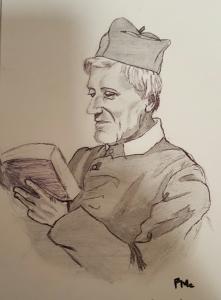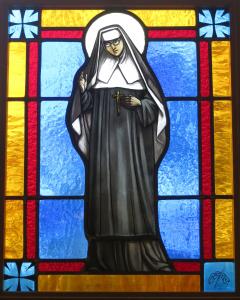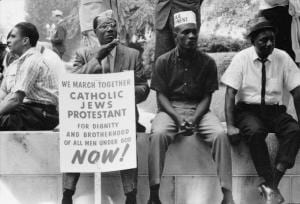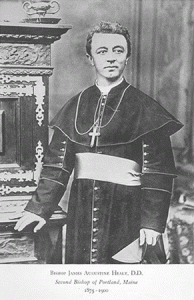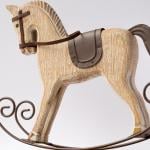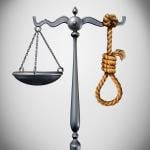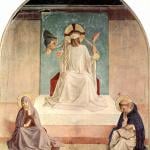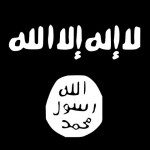Born in Tuscany, he received the nickname of Baccio della Porta for his house was near the Porta (“Gate”) San Pier Gattolini. Starting from 1483, by recommendation of Benedetto da Maiano, he apprenticed in the workshop of Cosimo Rosselli. He was one of the greatest painters of his time. In 1490 or 1491 he began a collaboration with Mariotto Albertinelli. The following year he was commissioned a fresco of the Universal Judgement for the Ospedale di Santa Maria Nuova, completed by Albertinelli and Giuliano Bugiardini when Baccio became a Dominican friar on July 26, 1500. The following year he entered the convent of San Marco. He renounced painting for several years, not resuming until 1504 when he became the head of the monastery workshop in obedience to his superior. In that year he began a Vision of St. Bernard for Bernardo Bianco’s family chapel in the Badia Fiorentina, finished in 1507. Soon thereafter, Raphael visited Florence and befriended the friar. At the beginning of 1508 Bartolomeo moved to Venice to paint a Holy Father, St. Mary Magdalene and St. Catherine of Siena for the Dominicans of San Pietro Martire in Murano, influenced somewhat by Venetian colorism. As the Dominicans did not pay the work, he took it back to Lucca, where it can be seen now. Also in Lucca, in the October 1509, he painted by Albertinelli an altarpiece with Madonna and Child with Saints for the local cathedral. On November 26, 1510 Pier Soderini commissioned him an altarpiece for the Sala del Consiglio of Florence, now in the Museum of San Marco. Two years later he finished another altarpiece for the cathedral of Besançon. In 1513 he went to Rome, where he painted a Peter and Paul, now in the Pinacoteca Vaticana, while from the following years are the St. Mark Evangelist of Palazzo Pitti in Florence and the frescoes in the Dominican convent of Pian di Mugnone. He died in Florence in 1517. (Seen above is his depiction of the Presentation.)
(From Wikipedia)
(From Wikipedia)



